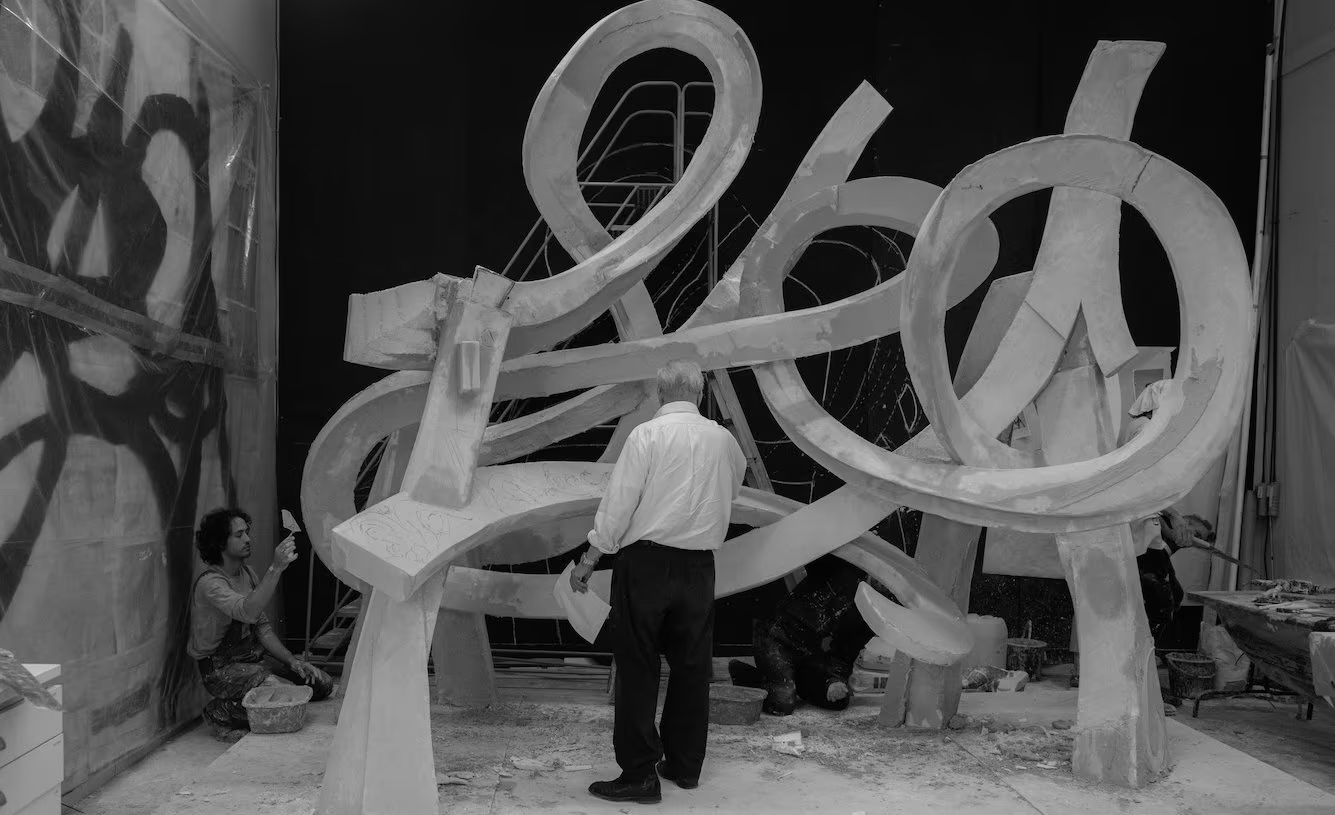
Robert Draws – William Kentridge’s Gravity-Defying Masterpieces have landed at the Yorkshire Sculpture Park in the UK, captivating visitors with a deeply emotional and intellectually charged solo exhibition. The South African artist presents over 40 pieces that span various media including large-scale paintings, short films, and kinetic installations. Kentridge’s work explores the heavy weight of history while seemingly floating above it through innovative use of space, texture, and motion.
Each creation invites viewers into a dialogue on colonialism, memory, and the complicated structures of power. The Pull of Gravity is not just an exhibit of visuals but a journey through a layered consciousness that refuses to stay silent. Humor intertwines with grief as political narratives are dissected and reconstructed. Audiences are not simply viewers, they are participants in a theatrical unfolding of societal reflection. Through his unorthodox approach to three-dimensional storytelling, Kentridge rewrites how art can confront the shadows of the past.
The core of William Kentridge’s Gravity-Defying Masterpieces is charged with political intent, using artistic form to critique systems of injustice and historical trauma. Visitors are confronted with the stark reality of colonial rule and its lasting impact on both the colonizer and the colonized. Kentridge does not moralize but instead invites viewers into spaces of discomfort where questioning is inevitable. In his kinetic sculptures, fragments of colonial iconography move in repetitive loops, symbolizing the cycles of oppression. Film reels display charcoal drawings animated into poetic sequences that depict violence and resistance with haunting elegance. The colonial narrative is not only challenged but dismantled with irony and introspection. What might have been presented as a lesson in history is turned into a living, breathing artwork that provokes thought and dialogue. The political content is powerful but never didactic, allowing each observer to uncover meaning through their own lens and emotion.
“Read about: Laguna’s Outdoor Art Spectacle Is Back! Watch Masters Create Magic Under the Open Sky!”
Memory plays a central role in the architecture of Kentridge’s exhibition. The gallery becomes a theatre of remembrance where each work acts as a fragment of a collective past. Through erasure and redrawing, his process reflects how memory is never fixed but constantly revised. Certain artworks show ghostlike outlines of previous figures, hinting at what has been lost or censored. Time is bent and stretched as charcoal smudges move fluidly across screen projections, suggesting that history cannot be cleanly narrated. Absence becomes a visual strategy, representing the people, places, and truths often excluded from dominant historical records. Kentridge’s world is not built on linear storytelling but on an emotional terrain shaped by memory’s instability. Walking through the exhibit feels like drifting inside a mind that is remembering and forgetting simultaneously. Viewers are left to reconcile what they see with what they feel, suspended in a space between clarity and confusion.
Among the most striking elements of the exhibition are Kentridge’s kinetic installations that breathe motion into stillness. Sculptures twist, rotate, and reassemble themselves, challenging traditional perceptions of static art. These moving works act as metaphors for the ever-shifting landscape of identity and power. Pieces made from salvaged materials rotate on mechanical pedestals, creating looping narratives that never quite repeat the same way. The mechanical rhythm evokes the machinery of colonial empires but also the persistence of resistance. These devices are not mere engineering marvels but poetic machines that give form to ideas otherwise too abstract to visualize. The contrast between fragility and mechanical force invites the audience to consider the vulnerability of human memory in the face of institutional power. By animating objects and drawings, Kentridge gives voice to silent figures in history and makes visible the unseen labor behind revolution and survival.
“Read more: One Secret Ingredient Makes This Salak Candy Irresistible, Try It Today!”
Despite the serious nature of Kentridge’s themes, a thread of dark humor runs throughout the exhibition. Satirical characters appear in video installations, mocking authority and pointing out the absurdity of oppression. This humor is never used to trivialize but to subvert. In one projection, a bureaucrat’s desk morphs into a battlefield, symbolizing how violence can be disguised in administrative language. Paper puppets argue in broken dialogue, poking fun at political jargon while revealing its emptiness. This playful aesthetic allows for deeper emotional access to difficult subjects. Laughter and discomfort often emerge at once, creating a paradoxical experience that keeps the audience engaged. The artist’s genius lies in using wit to disarm and then challenge. William Kentridge’s Gravity-Defying Masterpieces remind us that art does not need to be solemn to be serious. Through humor, the viewer is pulled deeper into the contradictions that define both personal and national identities.